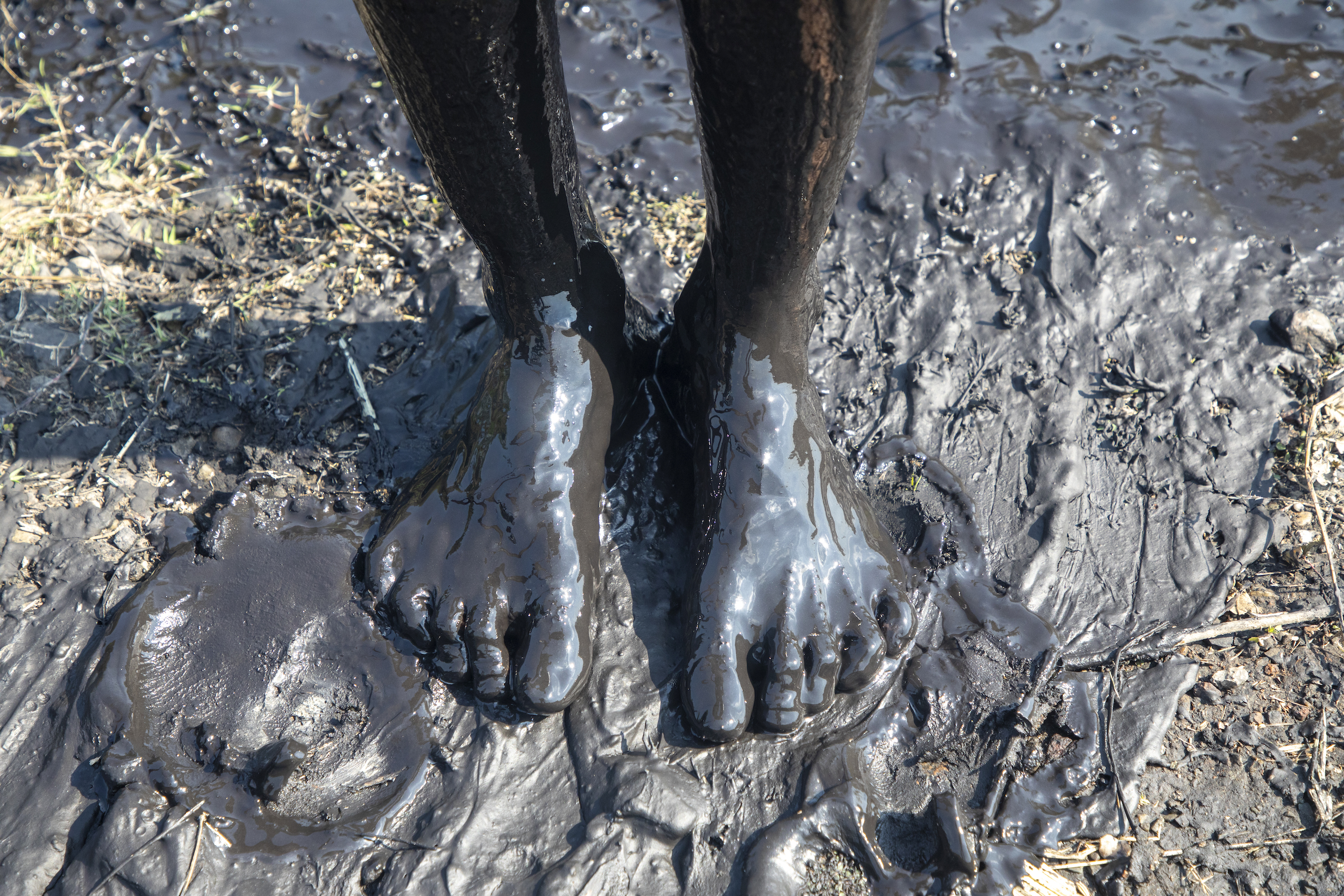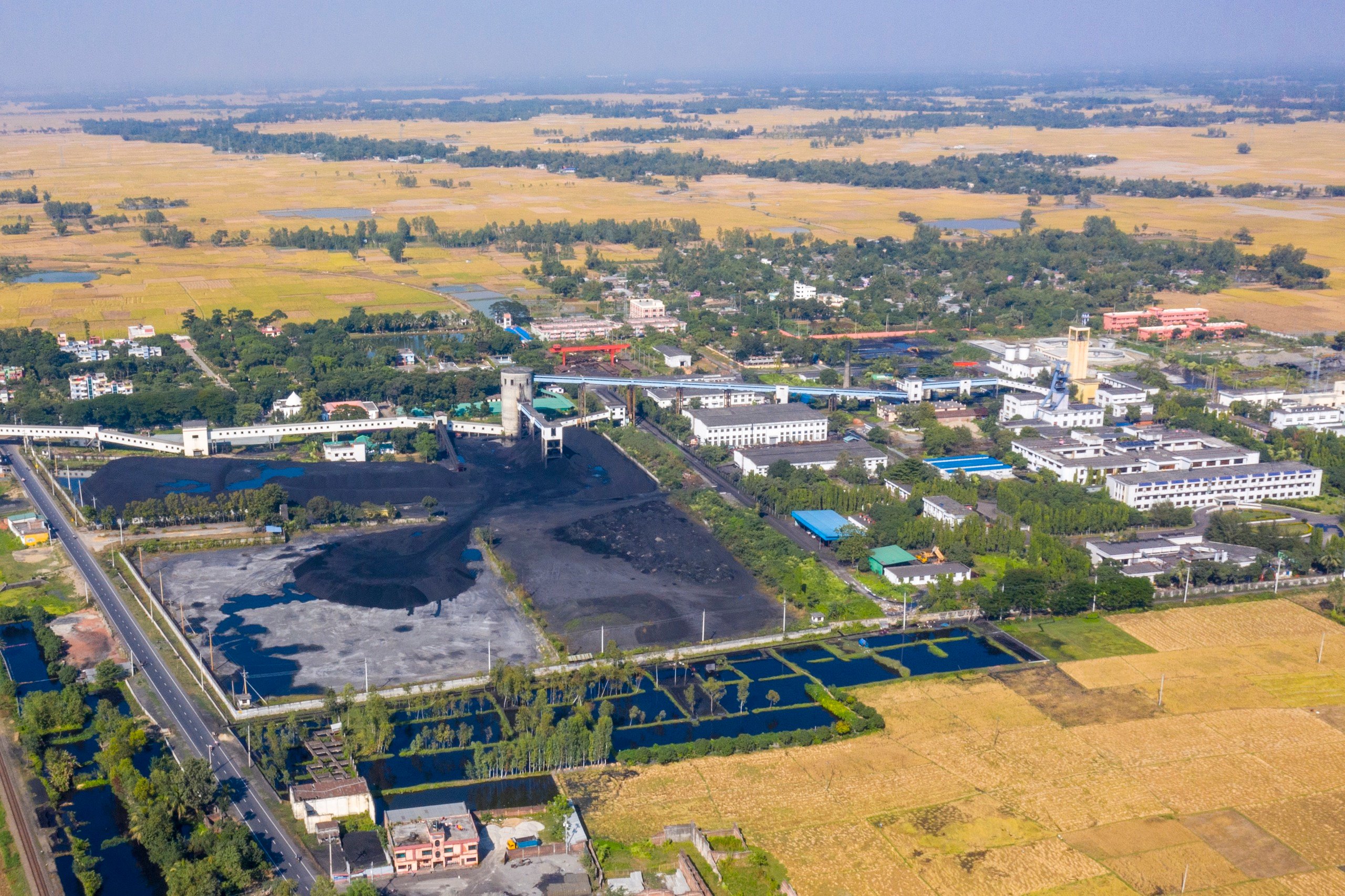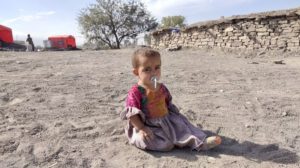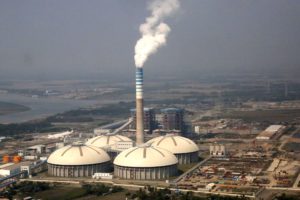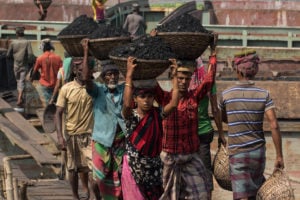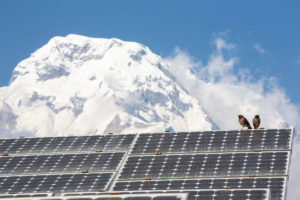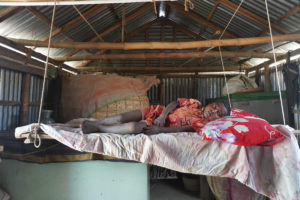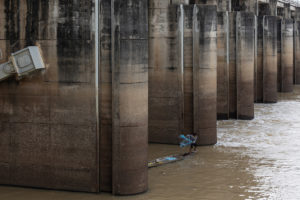Abdus Sattar remembers how, about 35 years ago, people in his neighbourhood enthusiastically supported the development of Bangladesh’s first coal mine.
“Ershad [the former military dictator of Bangladesh] came to our village on a helicopter and we thronged to see him. He posed a question to us: ‘Do you want your land or a coal mine?’ We all shouted at him: ‘We want a coal mine!’”
“We thought the coal mine would bring job opportunities,” said 75-year-old Sattar.
Today, the Barapukuria mine, which sprawls underground over an area of about 10 square kilometres in northwest Bangladesh, is the country’s only commercial coal mine. But the attitudes of local people in the neighbourhoods of Barapukuria and Phulbari have changed drastically since mining began in 2005.
In 2015, Sattar’s family, together with the entire village of Patigram, had to leave their homes, located about two kilometres from the Barapukuria coal mine. “In 2014, our houses shook very frequently when explosions were caused underground to extract coal,” said Sattar. “Our houses developed cracks. Finally, we had to leave the village as authorities warned us that it would sink underground [due to subsidence].”
Sattar, his three sons, daughter-in-law and grandchildren now share a room that is less than 100 square feet. “The government gave us some compensation. But the money was not enough to buy new land and build a house. Now, we are landless,” he said.

As well as subsidence, local people say the coal mine and the adjoining coal power plant have polluted rivers and other water bodies in the area, caused groundwater scarcity, and harmed the health of plant workers, residents and agricultural land.
Now, the problems created for agriculture in Barapukuria are being factored into the government’s decisions around opening new coal mines.
The future of coal in Bangladesh
On 1 November 2022, MP Shibli Sadeeq asked the state minister for energy, power and mineral resources Nasrul Hamid whether the government would extract coal from the Dighipara coal reserve in Sadeeq’s constituency, which adjoins the Barapukuria coal mine.
In response, Hamid described problems caused by the underground mine at Barapukuria, explaining that it has caused subsidence and the formation of a “huge depression of water”.
“This damages the land and crops,” said Hamid, adding that Bangladesh’s prime minister Sheikh Hasina had instructed that coal could be extracted from other reserves only if there is technology that ensures farmland is not damaged. Hamid said that protecting agricultural production and food security were the government’s priorities.
The Third Pole’s reporter was present in Parliament when this was said, a video recording of which is available here.
But despite the problems caused by the Barapukuria mine, the end of coal mining and coal power plants remains far off in Bangladesh.
A few days after this exchange between the ministers, Md Shaiful Islam Sarkar, managing director of Barapukuria Coal Mining Company Limited, stated that Chinese support for coal mining in Bangladesh will continue.
Since 2005, the Barapukuria coal mine has been operated by the Chinese consortium XMC-CMC. The 525-megawatt-capacity adjoining thermal plant – the only operational coal power station in Bangladesh – was partly funded by the Industrial and Commercial Bank of China (ICBC), with a USD 224 million loan.
Sarkar told The Third Pole in early December 2022 that CMC-XMC will continue to extract coal in Barapukuria as set out in their contract, which ends in 2027.
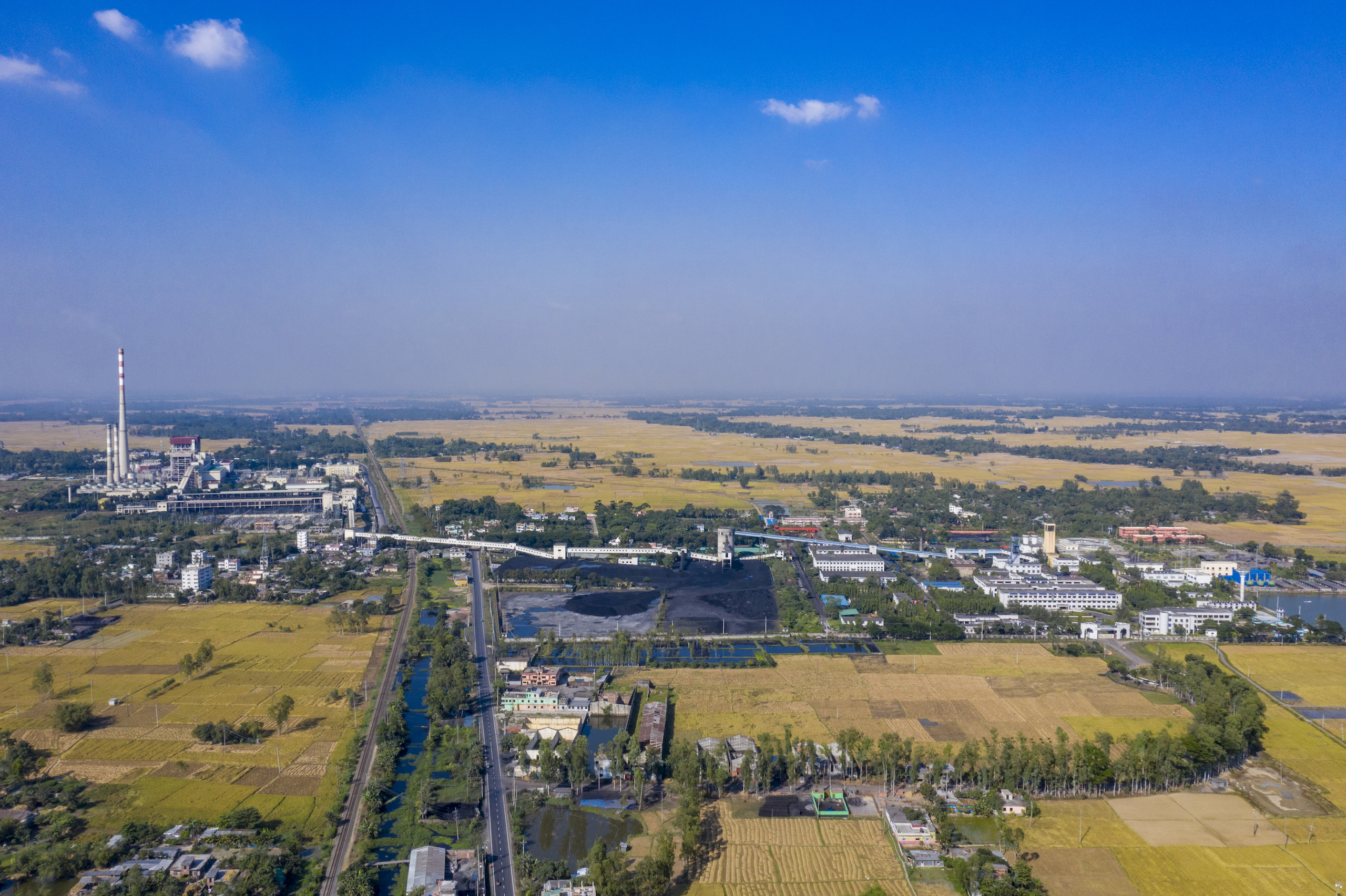
Nazmul Ahsan, chair of the Bangladesh government-owned energy company Petrobangla (of which Barapukuria Coal Mining Company Limited is a subsidiary), told The Third Pole in late November 2022 that he was not sure if coal mining in the country will end.
“Coal extraction from the Barapukuria coal field will end in 2027. We have a coal-based power plant which depends on the coal from the Barapukuria coal mine. What would happen to the coal-based thermal plant after 2027?” said Ahsan.
He added: “We acquired land [in Barapukuria], conducted surveys and other preliminary works for further extraction of coal, and forwarded those to the government for its decision.”
On average, the Barapukuria mine produces 3,500 metric tonnes of coal per day, all of which is sold to the power plant, Sarkar said. Between 2005 and June 2020, over 11.5 million metric tonnes of coal were extracted, according to official figures.
Farmland sinks as coal is dug from beneath it
The neighbourhoods of Barapukuria and Phulbari lie on a flat, highly fertile tract of land, where large quantities of rice are grown.
“Before extracting coal, the officials of Petrobangla and the Chinese company had a series of meetings with the local people. They assured us that nothing would happen to our valuable agricultural land and homesteads. They told us that they would refill with sand after extracting coal from underground,” said Md Minjahul Hoque Bulbul, who leads an anti-mining campaign group in Barapukuria.
However, the government has acknowledged that subsidence started in 2006, a year after the mining began. Hundreds of hectares of land have been affected.
At least 10,000 people from 17 nearby villages have been affected by the mine and power plant, according to Bulbul.

Frequent blasting underground to extract the coal shakes the buildings above, according to local residents who spoke with The Third Pole.
“If we lie down on the floor of the house, we can hear a goom goom sound; we can understand that something is going on under the soil,” said Fency Ara, who lives in Charapara village, located less than 400 metres from the coal mine. (Charapara is also referred to as ‘new Moupukur’, after a village that was lost to subsidence.)
“We experience the ground shaking at least 10 times a day, and because of the shaking, my house has developed cracks,” she said.
Sohana Begum, who also lives in Charapara, said the tremors have been happening for at least two years. “When I sleep with my son at night and the ground starts shaking, I cannot think that we would see next morning.”
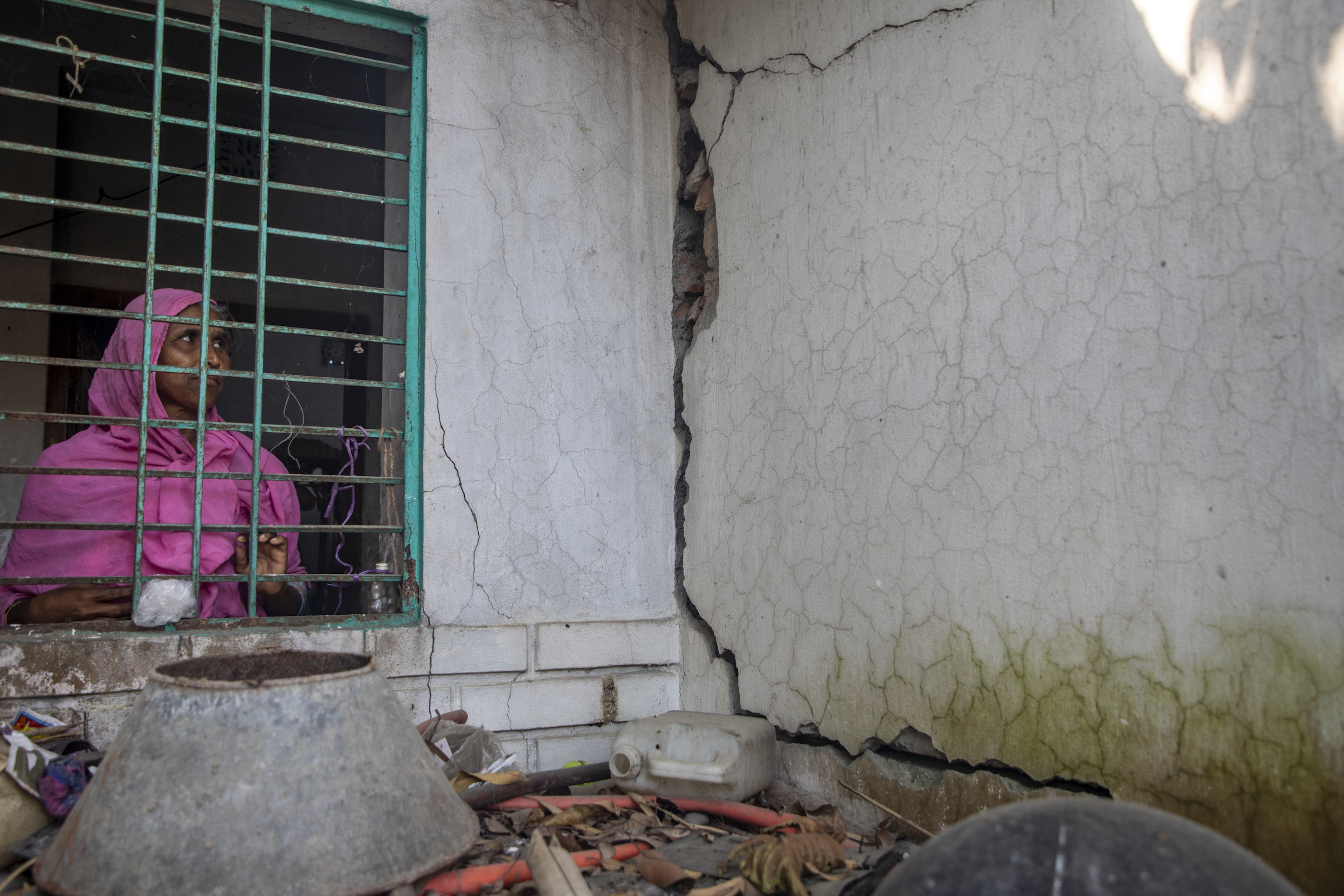

“Bangladesh is a delta and the underground rock is not hard enough [for underground mining],” said Mohammad Tamim, a former government energy adviser. “We call it unconsolidated rock. If underground mining is done on such unconsolidated rock, there must be land subsidence. There is no way to avoid it.”
In response to The Third Pole’s questions about the land subsidence and ground shaking, Sarkar – managing director of Barapukuria Coal Mining Company Limited – said these effects are “inevitable” and that “We have to accept these harms if we want to mine coal.”
Regarding villagers’ complaints that the authorities promised to fill the mine with sand after extracting coal, Sarkar said: “This is not possible… Where would we get [that] much sand?”

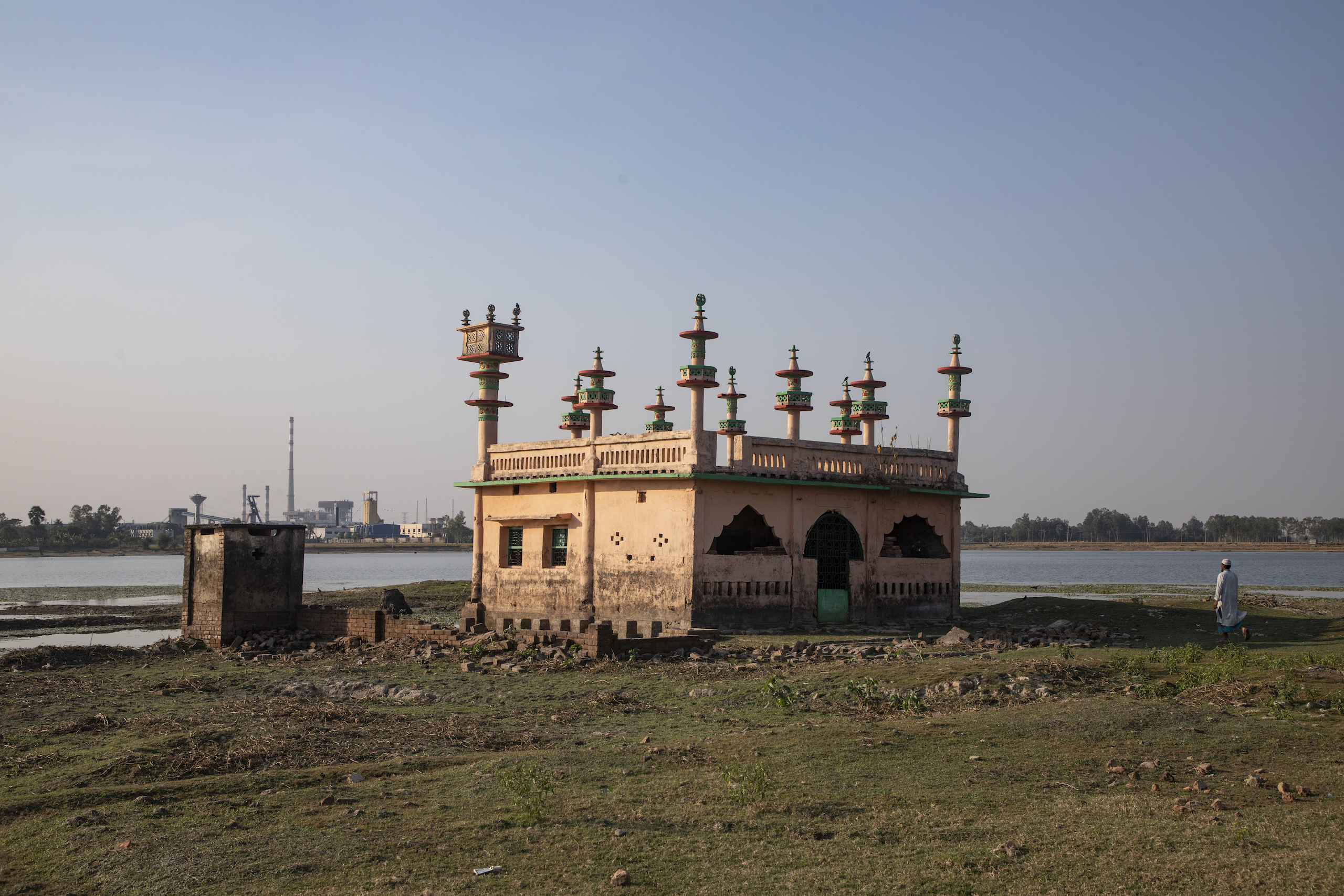
Villagers complain of water shortages and pollution
Bulbul, the local campaigner, said that at least nine villages to the north and west of the coal plant are experiencing alarming water shortages.
Mokhtar Ali, a resident of Dughipukur village to the west of the plant, told The Third Pole that before the coal mine and power plant were built, people could access water via traditional shallow tube wells, which are around 60 feet deep.
“All of the tube wells have turned out of order. Now, we have to install submersible deep tube wells to get water from 150-160 feet. The submersible pumps are costly. All people cannot afford it.”
“We are facing a huge water crisis in the entire area,” said Ali.
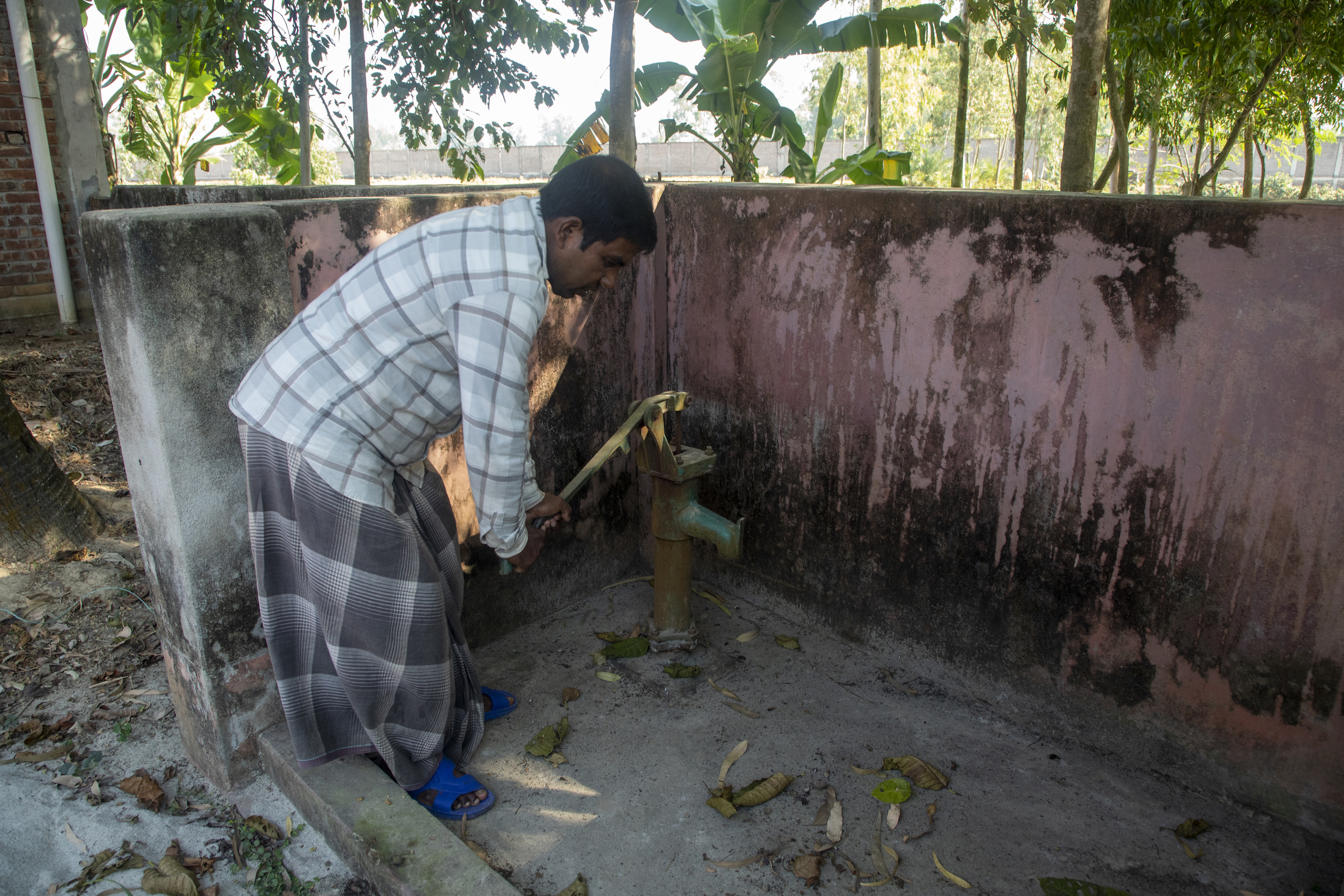
Both the mine and the power plant requires huge quantities of water to operate. Twenty deep tube wells have been installed in the neighbourhood around the power plant, which is owned by the government’s Bangladesh Power Development Board.
Then there is the issue of pollution from both the mine and the power plant.
“We cannot drink the [groundwater] of this village; it smells like kerosene,” said Manju Ara, who lives in Charapara.
Similarly, Md Melai, a resident of Rambhadrapur village in Phulbari, told The Third Pole that after 2006 – when the power plant started to generate electricity – the fish and water in the nearby Tilai River started to smell of kerosene.
The Barapukuria coal mine generates slurry – a mixture of coal waste and water – but does not have facilities to treat and dispose of it safely. During a visit to the area, The Third Pole’s reporter observed black sludge draining out of the site and into local water bodies.
Former energy adviser Tamim said he is aware that water containing coal sediment drains out of the Barapukuria coal mine.
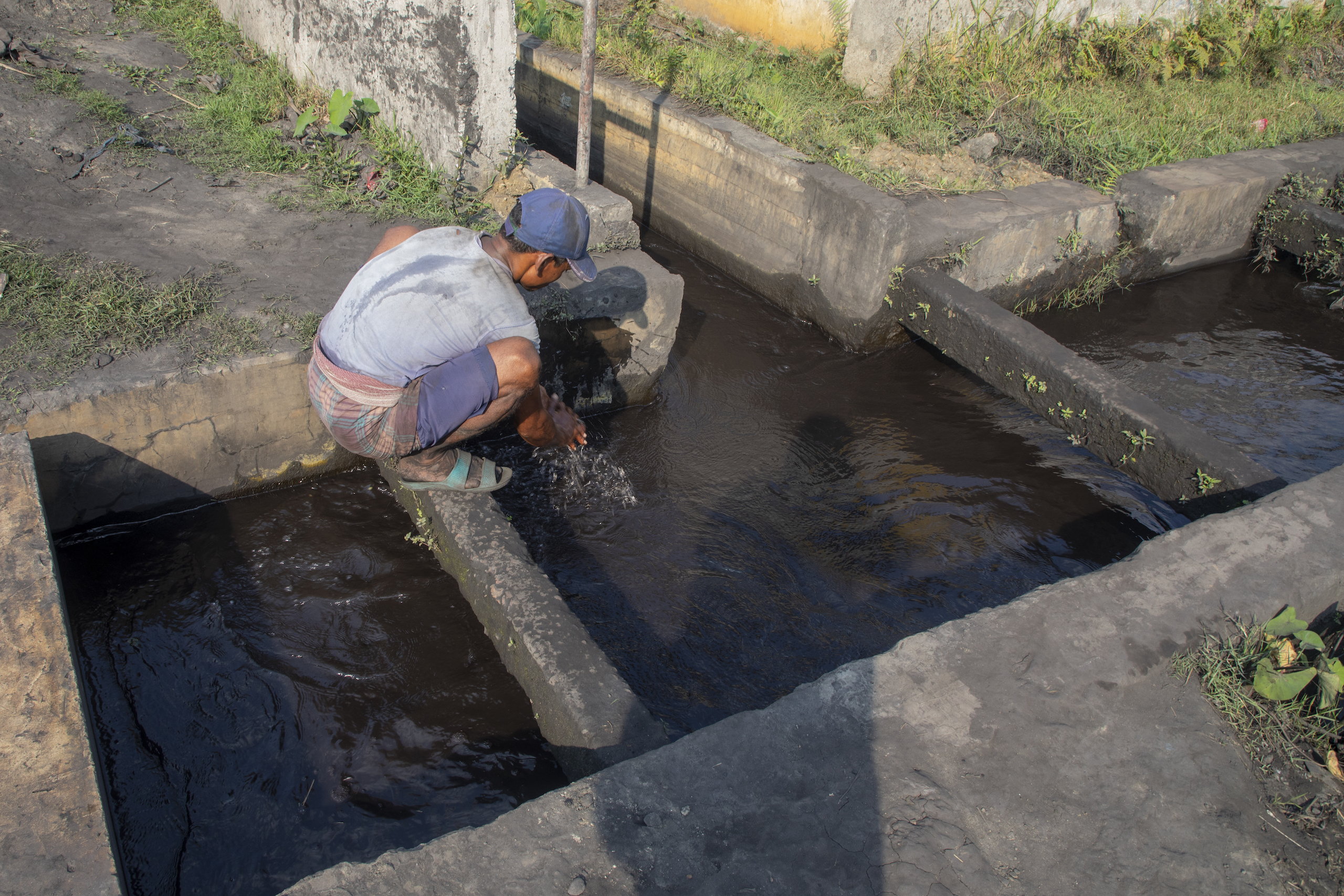

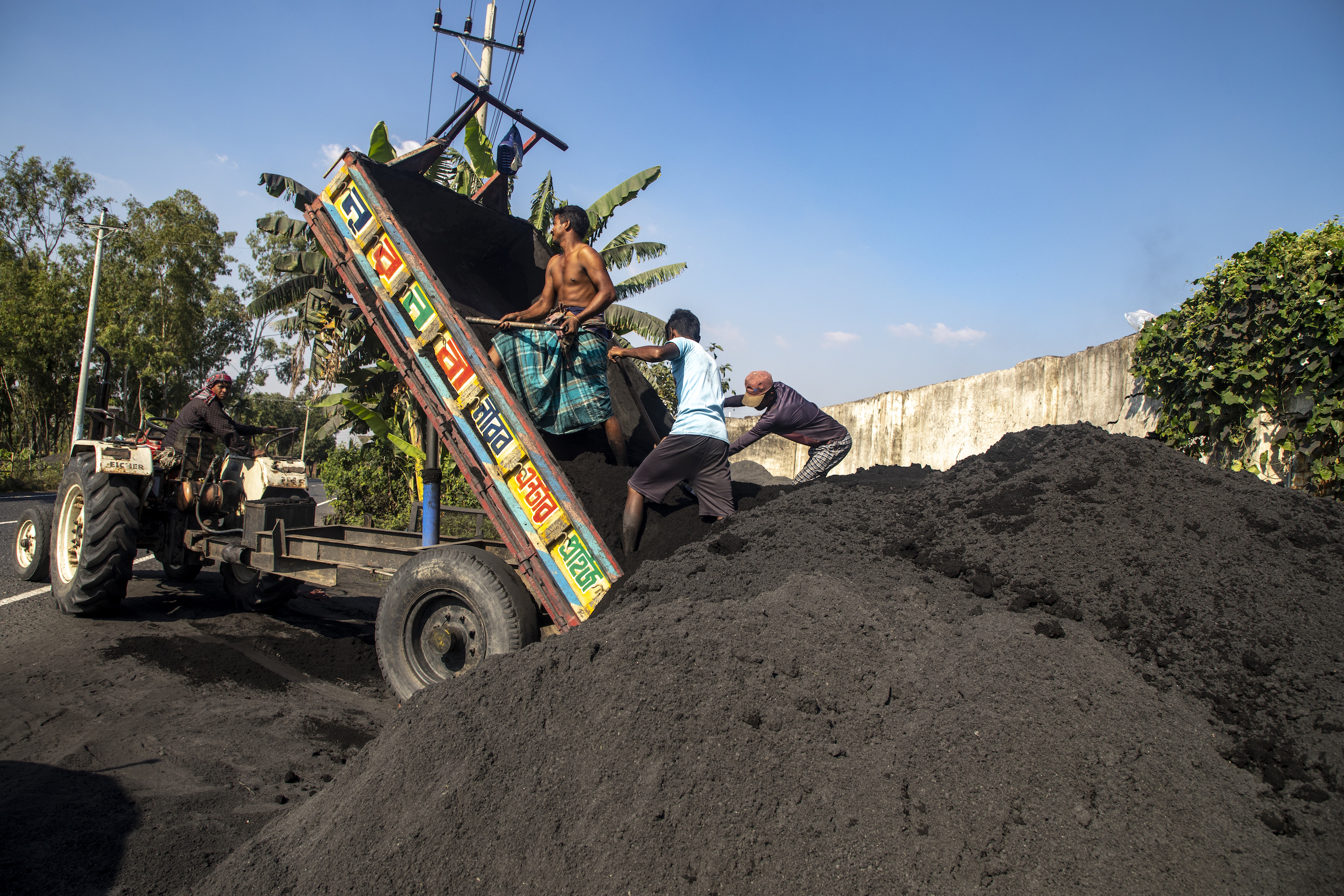
“Coal contains heavy metals. We need to carry out a study to see what sort of pollution the coal slurry water has been causing to the environment. If the water is dumped into the cultivable land for long, the heavy metals are likely to go into the food chain,” Tamim told The Third Pole.
“Coal slurry water goes to the canals, cultivable land and river,” said Sarkar. “Before we release it to the environment, we partially separate the suspended coal particles from the coal slurry water generated underground. But the coal slurry water does not pollute the environment. The local people are happy with it. They can collect the coal sediment and sell it as fuel.”
He added: “It is not possible to make the water fully free from coal sediment; this needs huge investment.”
Damage to farming and health
An outlet canal connects the power plant to the Tilai River. This canal channels black water into the river, near Mahalipara village, which is used to irrigate the area’s paddy fields.
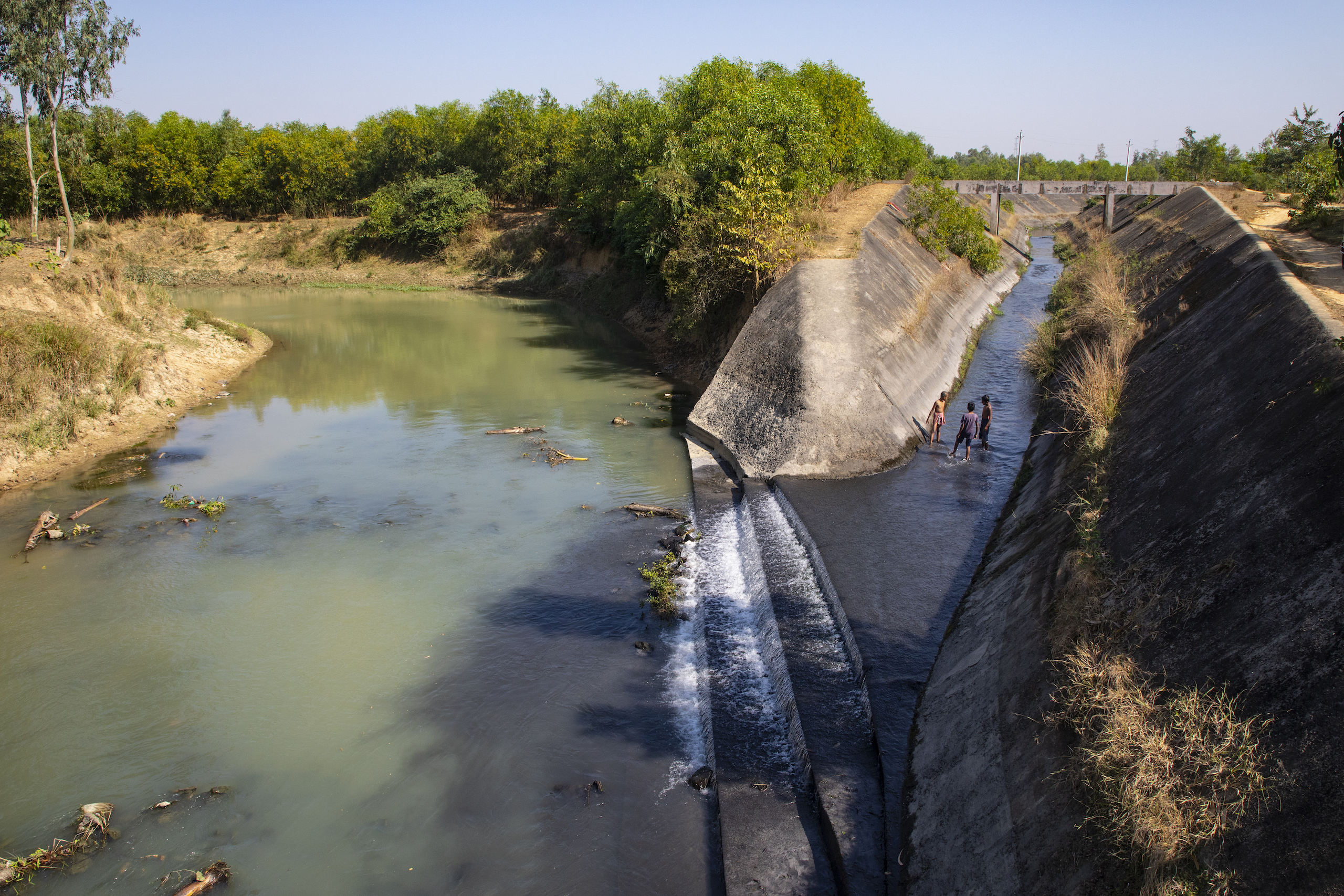
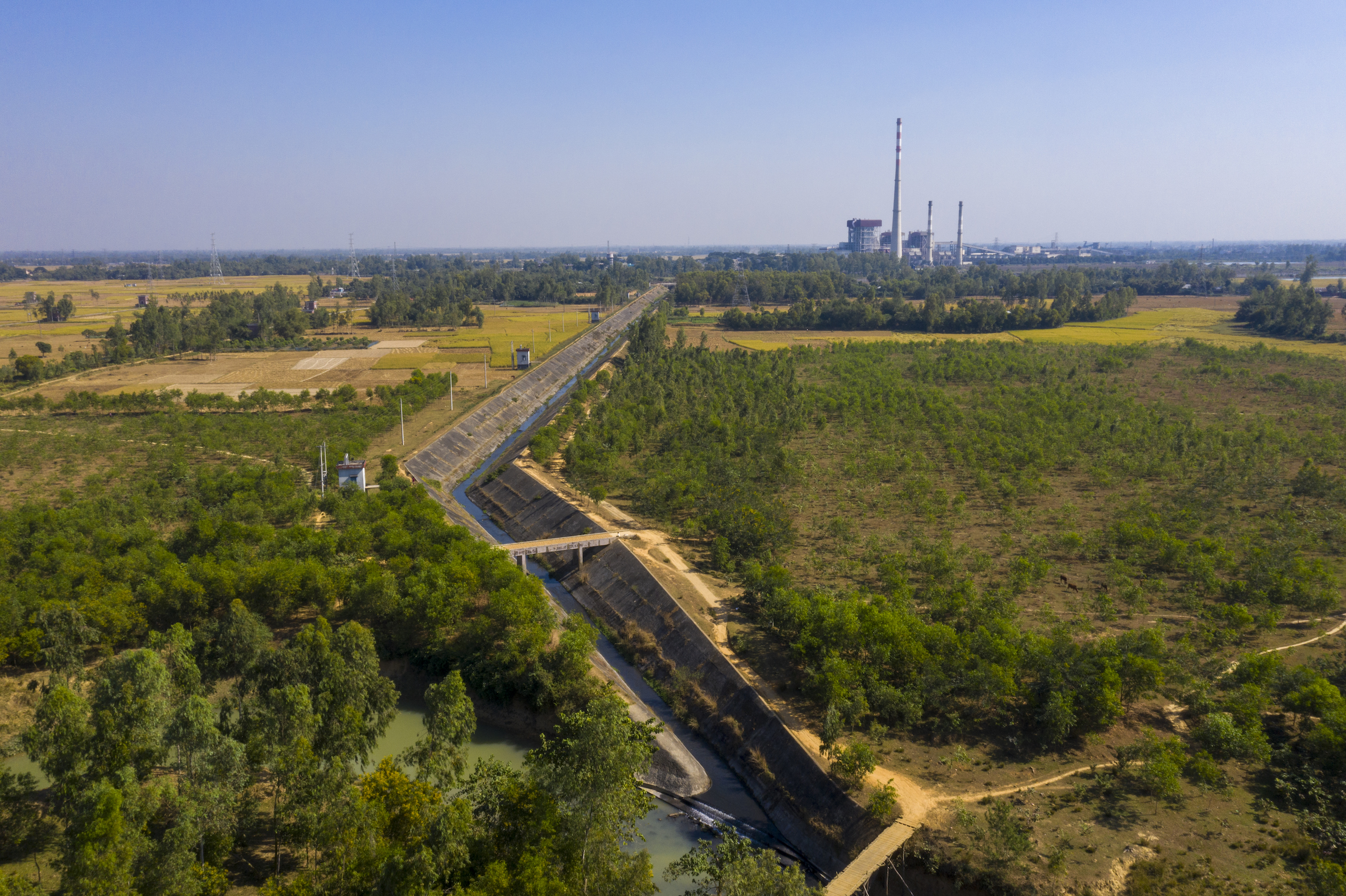
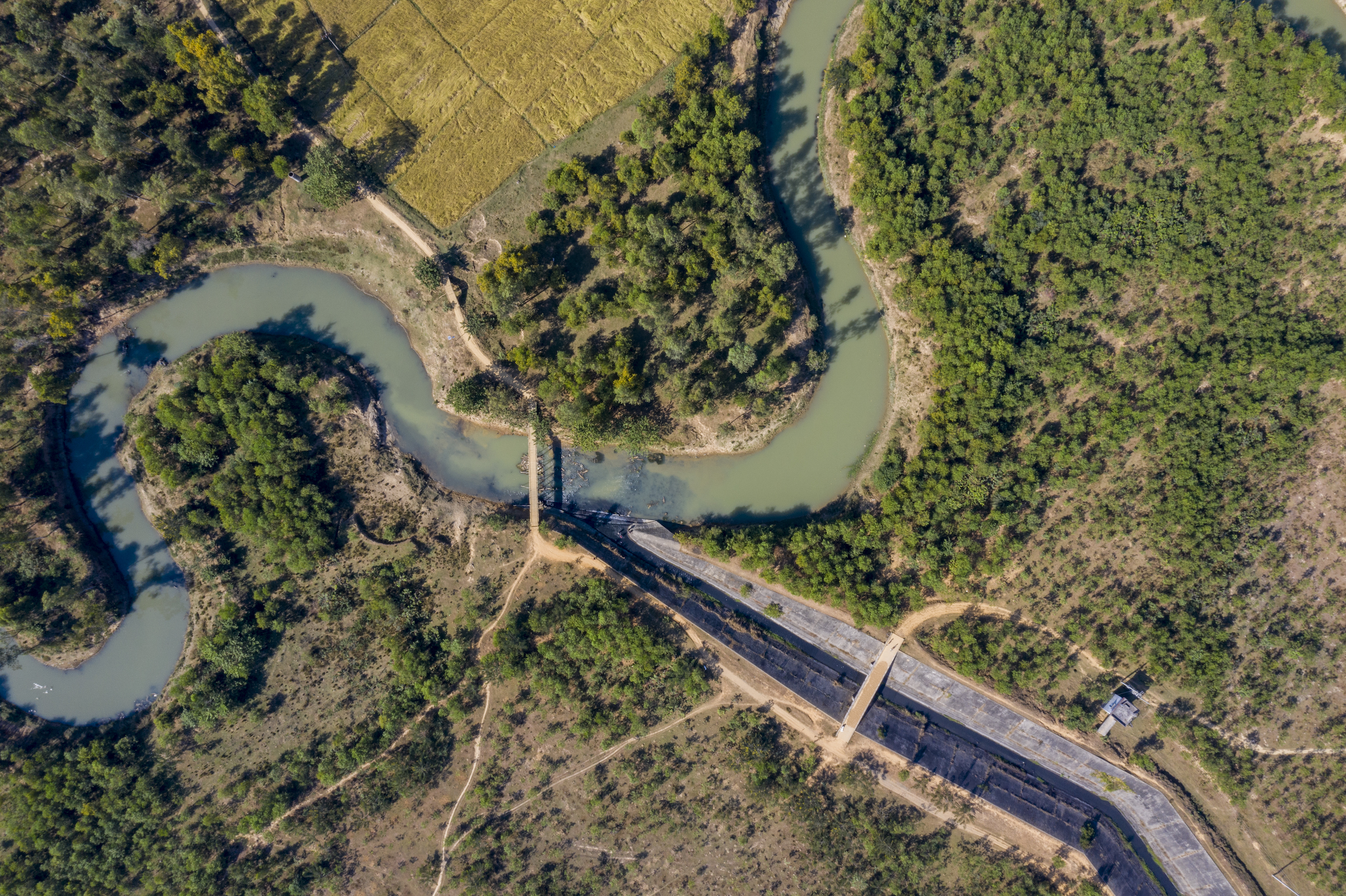
“They have been dumping the black water for the last 8-10 years. The cultivation of rice has come down, production of fruits and vegetables has reduced,” Jakar Mardi, a member of the Santal indigenous community in Mahalipara village, told The Third Pole. Mardi added that almost no fish are caught downstream of the point where wastewater flows into the river.
“Upstream we get fish… We can bathe and wash clothes. But downstream the water smells like kerosene; sometimes we see dead fish,” Mardi said.
“We cannot bathe in the river down [from] the point from where the black water mixes with the river water,” said Martina Soren, a widow in her 50s who lives in Mahalipara.

Tamim said he is surprised that polluted water is being discharged from the thermal plant. “Water in thermal plants is mainly used for generating steam and cooling. The water should be clean,” he said, theorising that coal slurry water from the mine may be being channelled through the power plant into the river.
Bangladesh’s coal debate continues
November’s parliamentary discussion about the future of coal mining in Bangladesh came as the country was grappling with energy shortages. Barapukuria is one of five major identified coal fields in Bangladesh; just under 6 km away is Phulbari, the site of a large proposed open-pit mine whose future has been uncertain since 2020. With three new coal power plants nearing completion in the country, and the cost of imported coal rising, will this complicate minister Hamid’s declarations about the strict conditions for opening new coal mines in Bangladesh?
The villagers told The Third Pole that they have been unable to get assurance in line with the energy minister’s statements that more mines will only be built if they do not damage farmland.
“The government has breached their commitments so bluntly that we cannot trust them,” said Sanjit Prasad Gupta, a leading member of the anti-coal mining group.
In the meantime, coal mining will continue at Barapukuria, with 4.5 million metric tonnes of coal targeted to be extracted until 2027, said Sarkar, speaking to The Third Pole in mid-December 2022.
“By 2024, we will come to know whether it would be possible to mine coal beyond 2027,” he said.
One thing is certain: public resistance to another mine will be strong. Abdul Khaleq, who is almost 70, worked in the Barapukuria mine and power plant for nearly 10 years. He said the ash he was exposed to caused him to go blind and he can no longer work. The Third Pole’s reporter felt their own eyes burning as they visited the villages near the power plant.
“This coal mine and the thermal power plant have brought no good to me and the people here. They are not good for the people, agriculture and the environment,” said Khaleq.
